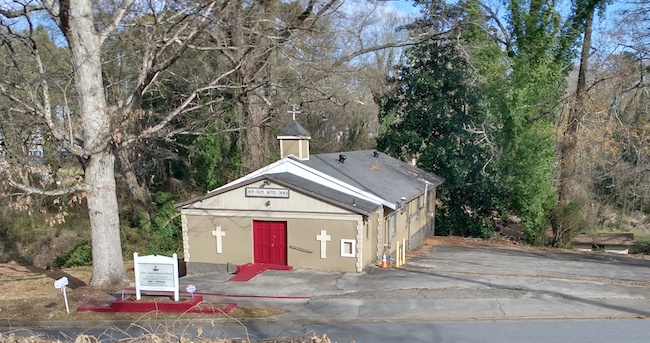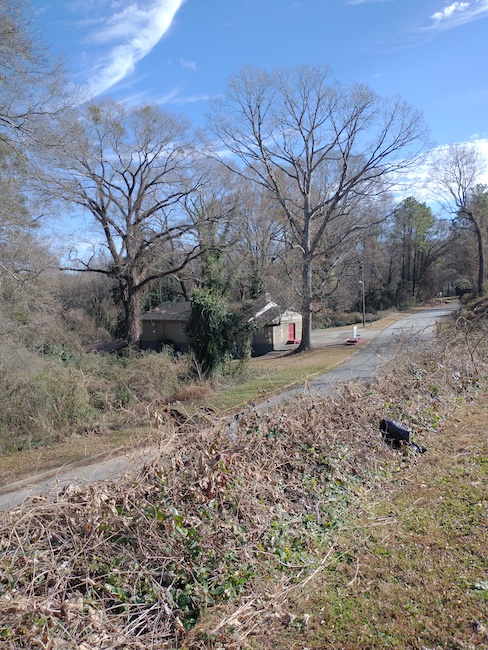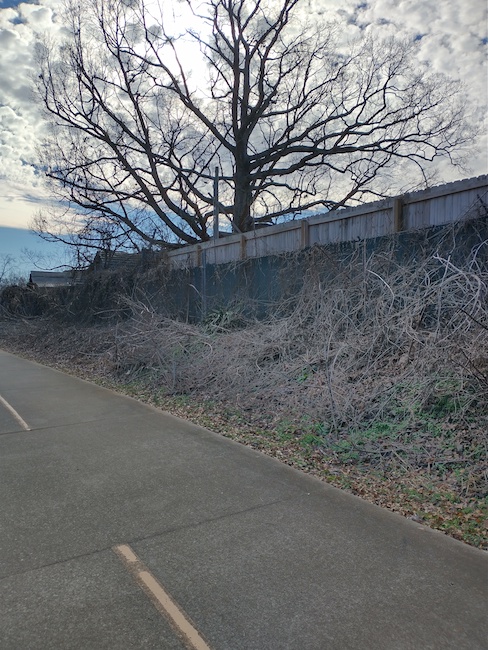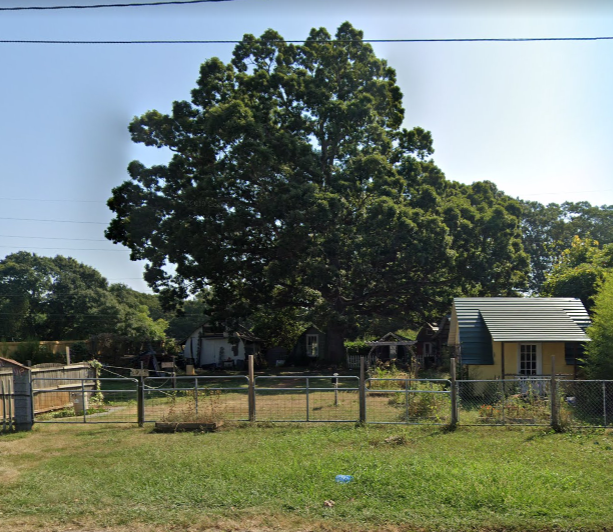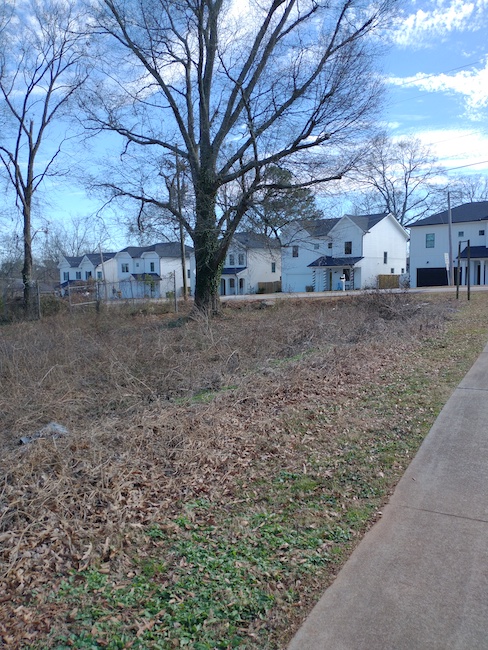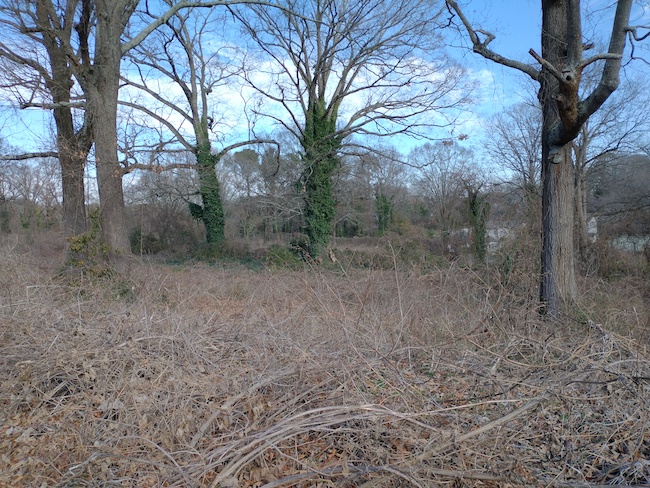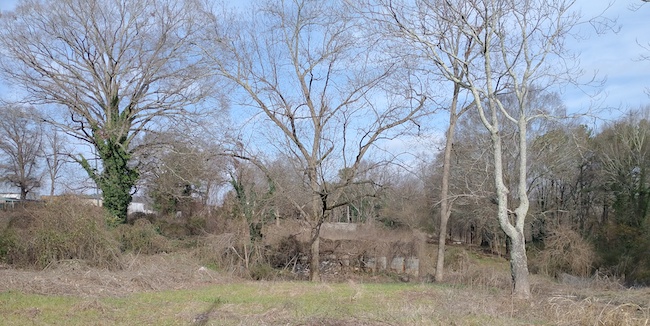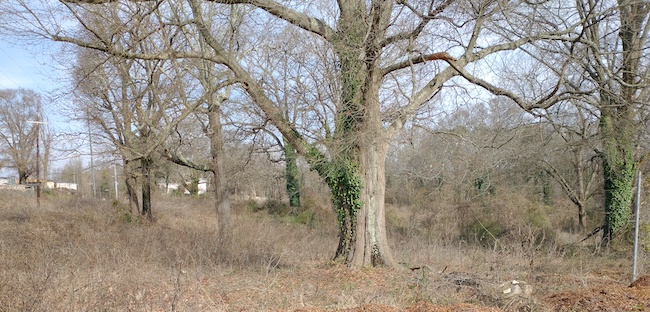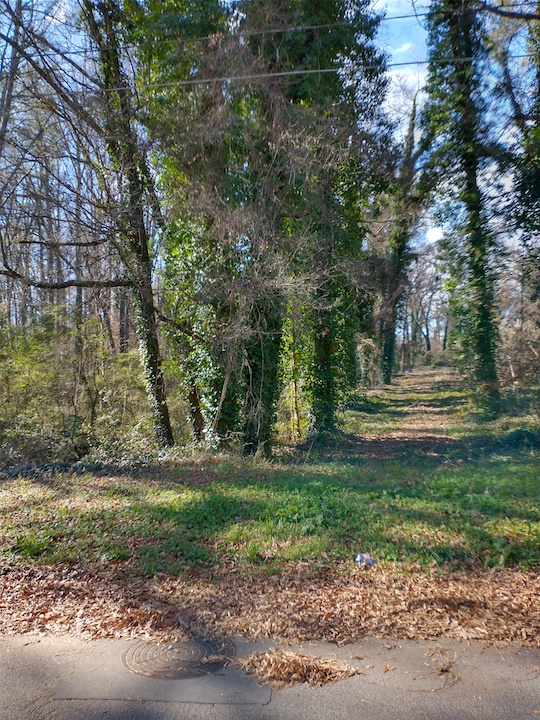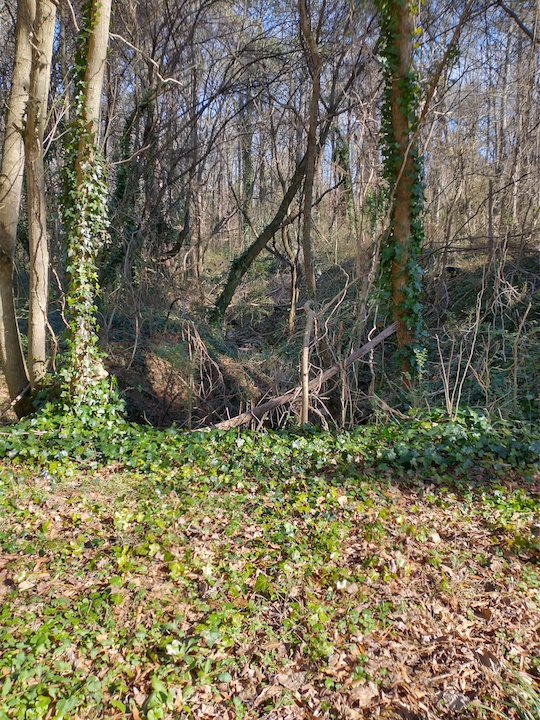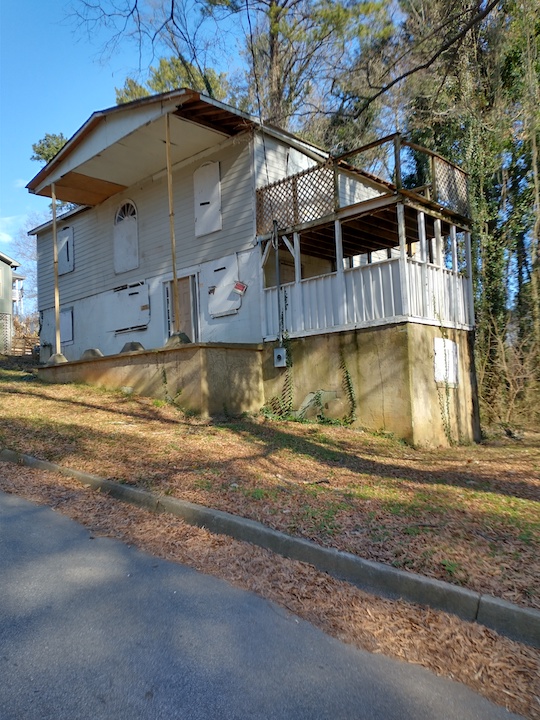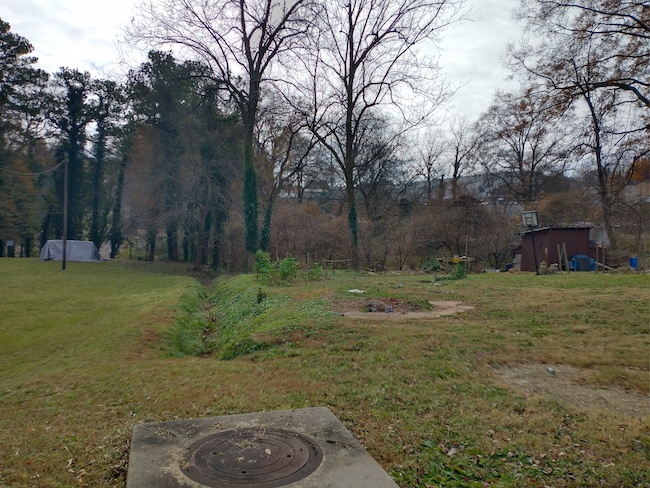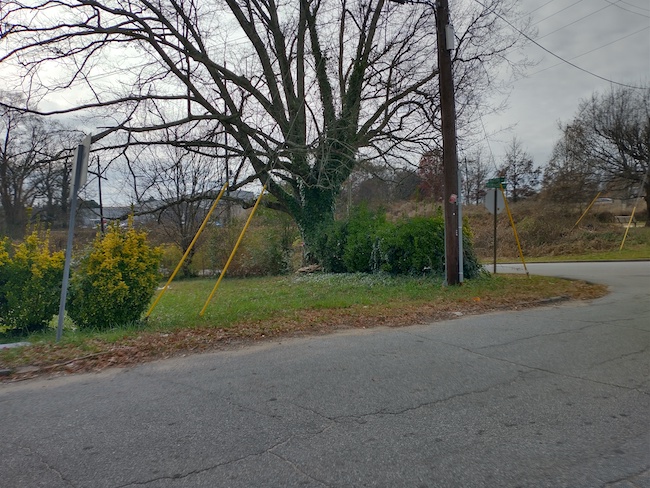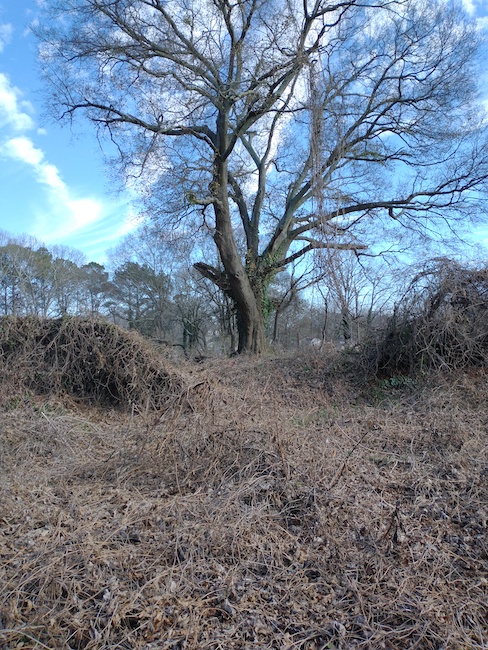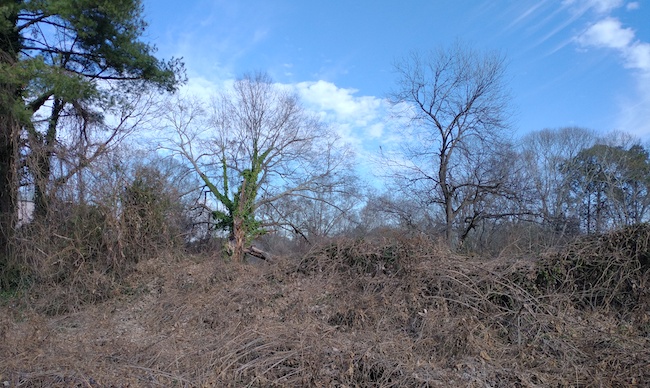Civic engagement and public service appeals to few. Of my neighbors, a limited number have ever attended any public meetings to protest future development and/or challenge county or city ordinances that may need reform and strengthening. Most don’t even know what’s about to break ground next door to them or the name of their County Commissioner or City Council representative. Local network TV news outfits can be reluctant to air stories about the pollution of rivers or streams. They see more sticky eyeballs (money) in coverage of crime, political squabbling or celebrity nonsense.
Most of the neighborhood that borders where I live in unincorporated Avondale Estates was overgrown and undisturbed for about five decades. Homes from the early 1900s now coexist with 1940s post war modest houses like mine, and more recently we’ve seen an influx of mid-range houses that are priced at $500k and higher. Still standing are old-growth urban forests on vacant lands, which provide habitat for owls, coyotes and migrating birds. Those islands of respite are fast approaching mere historical record as single family and townhome development continues its march forward.
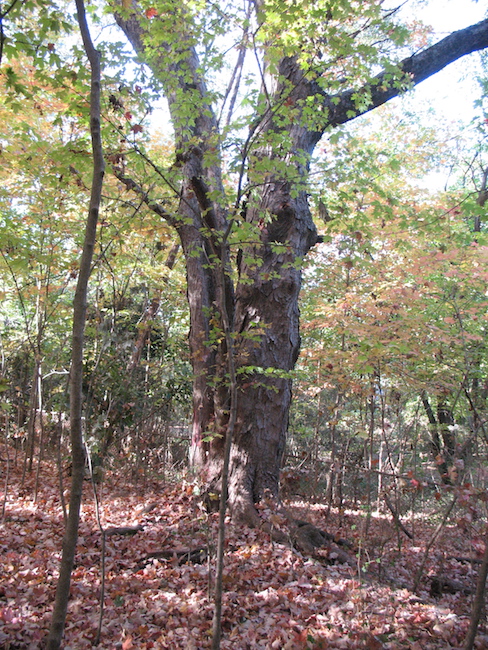
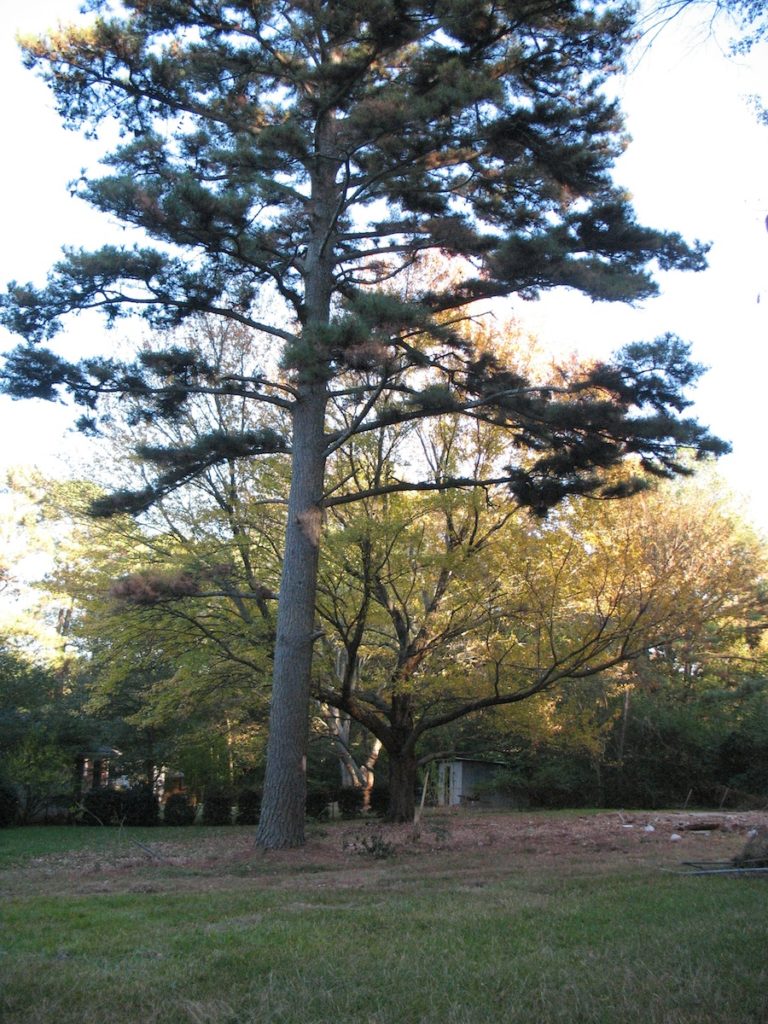
Scottdale is a “census designated place” in DeKalb county named for the man who originally founded a cotton mill here in the late 1800s. The Creek and Cherokee Indians settled and engineered most of the trails that are now streets and roads. In the history I wrote a few years ago for our civic alliance about those early beginnings; “according to the Scottdale Mill Collection in DeKalb archives, Ingleside and Scottdale were developed between 1900 and 1915 in order to provide housing for employees of the Scottdale Cotton Mills, which was founded by George Washington Scott, Atlanta fertilizer manufacturer and co-founder of Agnes Scott College in Decatur. Scottdale Mill was built in 1901 on a cotton field near a small creek.”
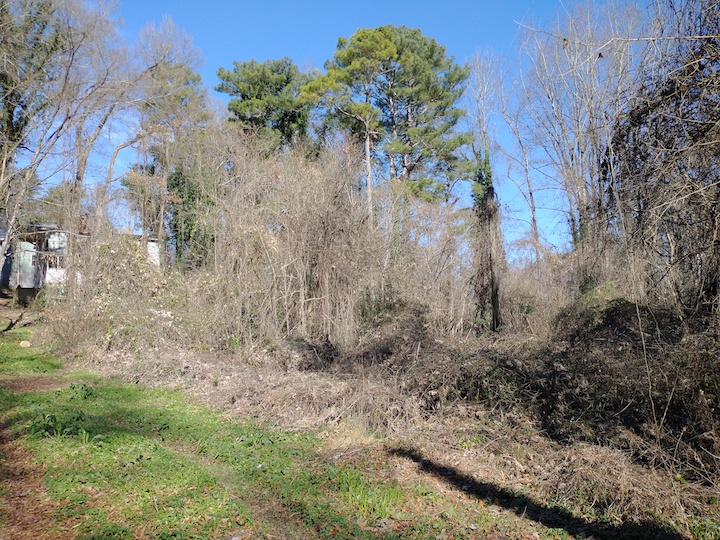
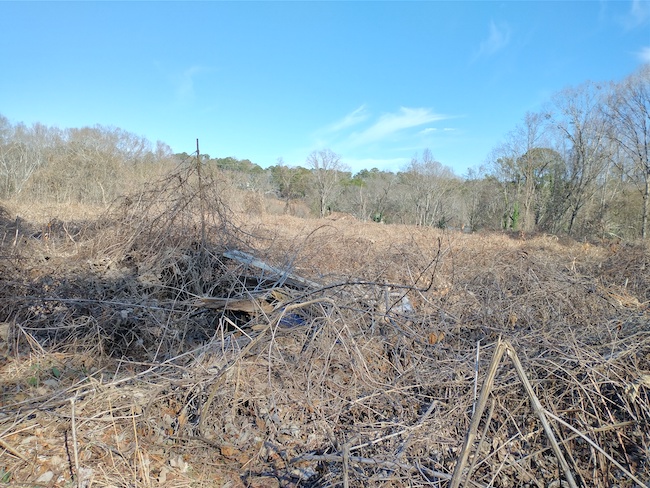
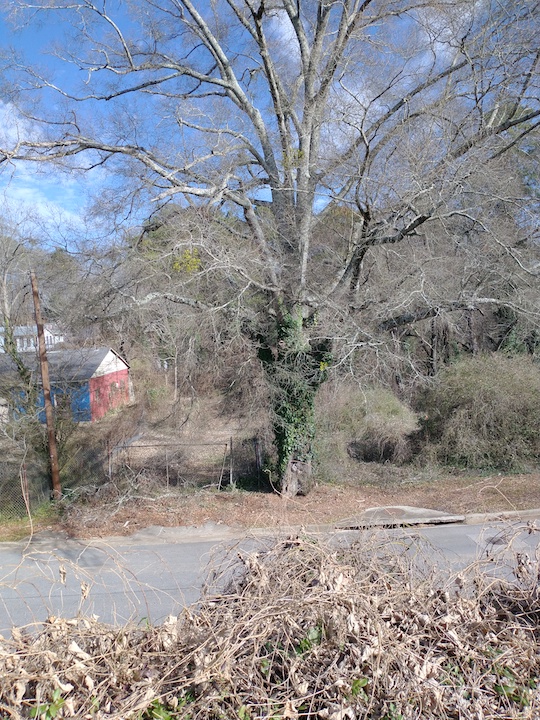
Because development was slow to reach a neglected part of what would become bedroom communities east of metro Atlanta, our oldest trees survived. That is, until recently- the area has had an onslaught of building since 2010. And although DeKalb county has a relatively decent tree protection ordinance, developers find ways around it and county planners allow far too much land to be clear-cut through variances. Sometimes they’re simply unaware that it’s happening. Recently developers have taken advantage of the pandemic by neglecting to submit permits at all. A few neighbors and I have monitored our streets over the past ten years of development boom and act as volunteers for code enforcement, reporting the lack of visible permits on site or land disturbance and clearing without silt or tree protection fencing.
One change in my own habits during the last few months has been long walks around the neighborhoods. The vacant lands that aren’t yet developed have mostly been bought by either local developers I’m aware of or by unknown LLCs tied to attorney offices in downtown Atlanta. Some of the photos below from recent walks are of land soon to be developed, with specimen trees that have been admired for hundreds of years. Once these trees are gone, our energy heat indexes and stormwater management will increase in costs for both the consumer and the county.
My 2-3 mile walks have taken me into the heart of Scottdale, which when I bought my home in 1987, was inhabited by a majority of African American property owners and a smattering of white residents who had probably grown up here. With the help of local community organizations and in 2008 the county’s rezoning of the area to an overlay district, it has maintained the character and feel of a small intown neighborhood. Overlay districts have similar setback and design mandates as historic districts do, but with more leeway for renovation. Protection and preservation of the mature trees and Indian Creek’s tributaries have been my own and other neighbors’ missions since 2010, when I returned to the area.
Third Ave. between Kelly St. and Robinson Ave. is a long hill to climb. The oral histories include elderly women describing the gullies that turned the dirt roads (paths more likely) to mud in 1930s era spring rains. As children, they had to wade across engorged streams to get to school. It’s easy to imagine now, because so much of the area has been left to fend for itself.
One younger neighbor came out of his house on Third the other day to query why I was taking photos and whether I was another greedy developer out to grab up adjacent land. It turned out that Jerry had grown up in the neighborhood and gone to school not far away. It was hard to believe that at his age he’d already served in Iraq and was a former DeKalb policeman. I was touched by his protectiveness.
On that same walk I met Mr. Jackson who lives on Robinson Ave., by chance he was outside and stopped to chat with me. A veteran of the Vietnam war and a long-time resident, he stated that he had no plans to ever move. Coincidentally, Jackson knows a neighbor who lives across the street from me, whose father owned the house next door when I first moved in. I took photos of the storm drain depression that bisects Mr. Jackson’s property from a lot that was bought for $9800 in unpaid taxes in 2019 and is destined to be developed. He told me that another developer had visited earlier this year and said that the two commercial lots adjacent on his other side would be ‘turned into townhouses’. Since his property is now zoned Tier I commercial in the overlay district, he may end up living in his historic 1940 home between two townhome developments. The only good news is that he now knows he should hold out for a higher bid if the developer makes an offer.
Mr. Jackson installed his gardens in the back near the storm drain’s runoff, where the soil is rich, fed by one of the many Indian Creek tributaries in the area.
Metro Atlanta is inland but the area is threaded with tributaries from seven watersheds that include Long Island, Nancy, Peachtree, Proctor, Sandy, Utoy and Camp creeks. The Ocmulgee River collects drainage from three watersheds in the City including South River and Sugar and Intrenchment creeks. DeKalb county alone has multiple creeks and streams traversing its boundaries, Indian Creek meanders through this neighborhood.
Like any other historian, I find that it’s important to document these areas before they’re transformed. Nature hasn’t been completely left untouched, but what we do have left, we should protect and preserve. Housing can be built around trees and streams, white oaks can live up to 600 years. Is it wise to destroy the ancient soil structure and root systems that help mitigate with stormwater runoff during severe storms? Of course not, but that is what counties and cities are allowing all over the country, the excuse is that we need either more housing or affordable housing. We could have done both, had we better ordinances and programs in place.
More progressive cities, or those who have been hit hardest by extreme weather like the coastal areas of WA, LA, TX and NJ, have begun saving land and offering tax incentives to developers to preserve mature tree stands. Saving land means partnering with local and Federal programs and agencies to buy up properties prone to flooding and return the areas to the wild. What was once houses is now marshland or wetlands, which traditionally were able to absorb storm surges. What we need is more respect for what nature provides, and for free to us.
Recently, a contact from the Wylde Woods garden center in Decatur, GA forwarded a link to a webinar titled Just Language: Invasive Species. The opportunity offered a discussion with young ecoscientists, environmentalists and land managers who are trying to change the language for and the way we view native versus non-native or what we’ve called “invasive species”. These are thoughtful folks of all ages who are doing good work in the field, both legally and culturally.
Coyotes roam our streets and backyards at night, ridding them of rats and other rodents, their main diets. However, my local Nextdoor has multiple posts about their designation as an invasive species, without the quantifier that wolves co-evolved along with coyotes and kept the population in check, just as they did for elk and deer, who over-browsed and destroyed forests, meadows and riverbanks running throughout the country. Until we killed off most of the wolves those ecosystems were in relative balance. Now that scientists have reintroduced wolves to Yellowstone Park, “they are subtly restructuring the ecosystem, a process that will take decades.” Biologist Doug Smith speaks about that in depth in this interview. It’s more appropriate to refer to coyotes as a “responsive” species, because that’s what they are.
An interview in the Sun magazine with Eileen Crist offers critiques and possible paths out of our own species supremacy. Crist maintains that we need to reduce our population from a projected 10 billion to 2 billion and to degrowth the economy. Technologies are great, but that won’t stop the ‘domination crisis’ and she links the crisis to agriculture, which needs to radically change. Producing food and reducing waste could in the future, owe much to innovative technologies being developed now. “What would happen if some global catastrophe disrupted our food system?… Try to imagine a food shortage instead of a scarcity of toilet paper.”
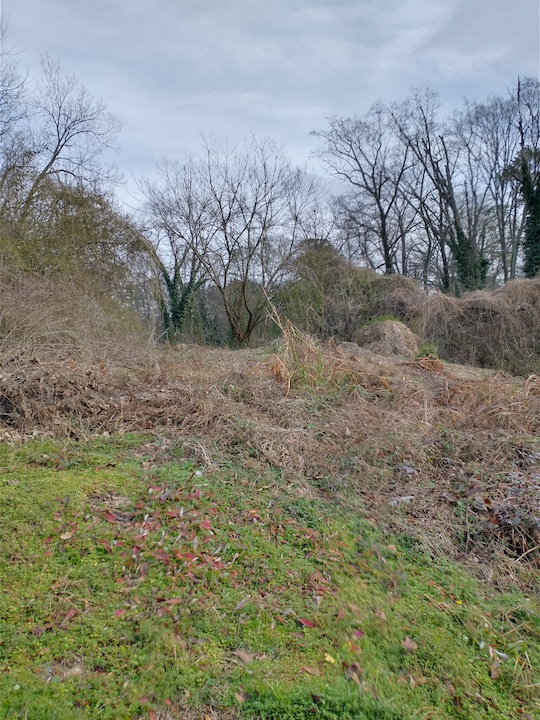
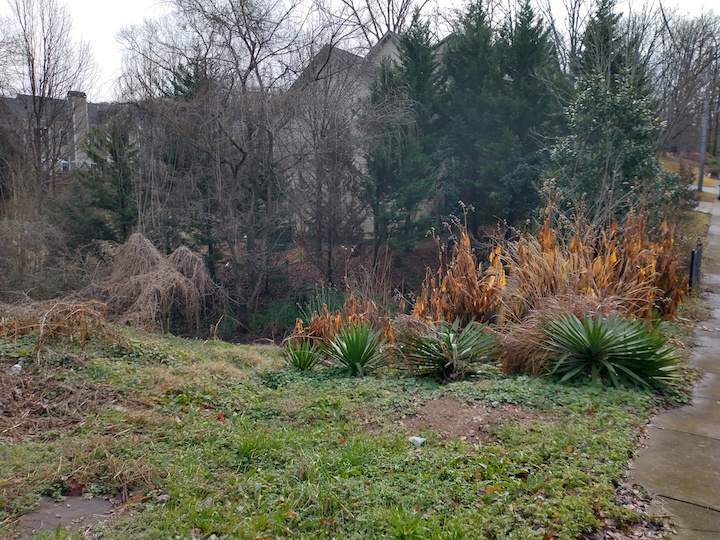
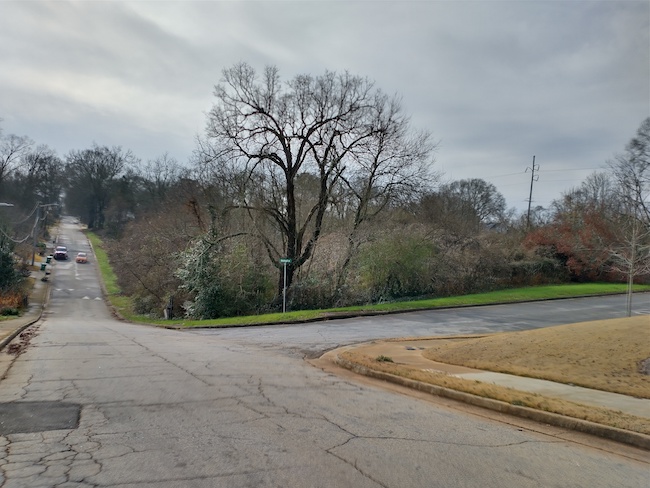
“The land still provides our genesis, however we might like to forget that our food comes from dank, muddy earth, or that the oxygen in our lungs was recently inside a leaf, and that every newspaper or book we pick up is made from the hearts of trees that died for the sake of our imagined lives….Whether we are leaving it or coming into it, it’s here that matters, it is place... Wildness puts us in our place. It reminds us that our plans are small and somewhat absurd.” -Barbara Kingsolver, from “The Only Real Story”, 2002.


